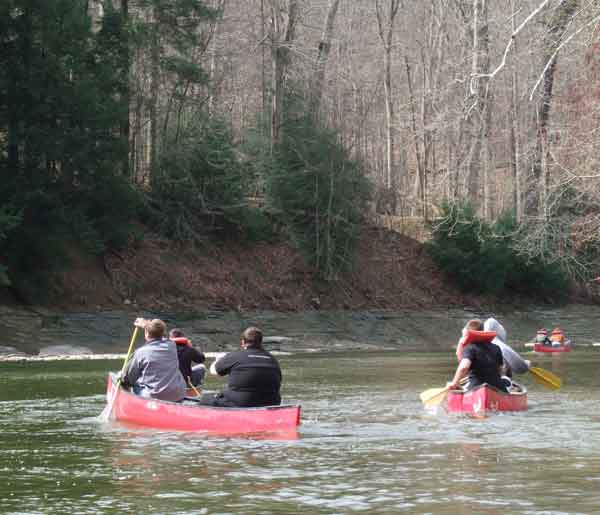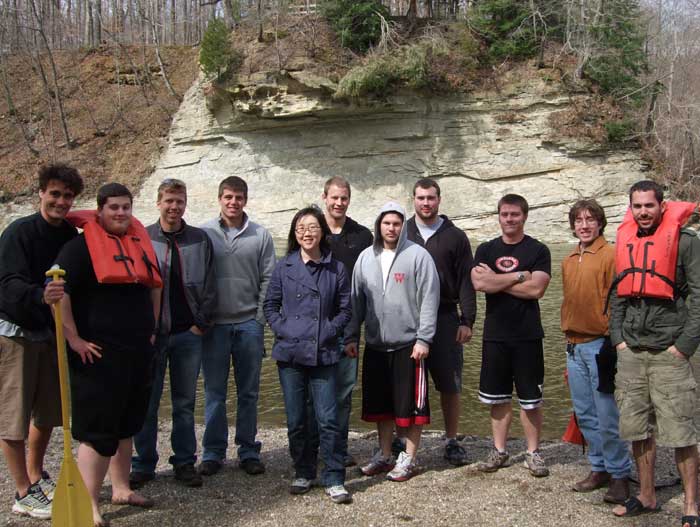 What is the economic value of Sugar Creek to residents of Montgomery County? How does damage to the creek affect not only businesses that depend upon it for revenue, but for other businesses in Crawfordsville and the surrounding area?
What is the economic value of Sugar Creek to residents of Montgomery County? How does damage to the creek affect not only businesses that depend upon it for revenue, but for other businesses in Crawfordsville and the surrounding area?
Students in Wabash Economics Professor Christie Byun's Environmental Economics class got a chance to ask examine those questions up-close last week as they toured several sites on Sugar Creek, then rented canoes from Clements Canoes Outdoor Center for a short paddle down the area's number one recreational destination. (See a photo album here.)
"As a mini-project for the class, we're studying Sugar Creek and its economic valuation it in terms of recreational use and tourism, as well as for local real estate values," Professor Byun explained. Friends of Sugar Creek Project Coordinator Nate Mullendore ’07 introduced students to the creek, taking the group to a site in town where the streams banks were badly eroded.
"One house had to be demolished, otherwise it would have eventually collapsed into the creek," Byun explained.
Then the group began their paddle down the creek, considered by many the most beautiful stream in Indiana.
"We talked to the canoe livery manager to get an idea of the amount of business he gets during the season," Byun said. "The amount of revenue they earn through rentals is quite large, and any kind of damage to the creek would damage his business (and others as well).
 "It was a good experience for the students to see these things in person," Byun said. "Seeing a photo is helpful, but going to the actual sites makes it all the more real. And it leads our class to the next topic—contingent valuation, that is, figuring out the value of a natural resource, when there is no direct market price for it. Some people never visit the creek, yet they place an "existence" value on it, meaning that they like the fact that such parks and resources exist at all.
"It was a good experience for the students to see these things in person," Byun said. "Seeing a photo is helpful, but going to the actual sites makes it all the more real. And it leads our class to the next topic—contingent valuation, that is, figuring out the value of a natural resource, when there is no direct market price for it. Some people never visit the creek, yet they place an "existence" value on it, meaning that they like the fact that such parks and resources exist at all.
"A lot of environmental goods are hard to place a price on, which makes it hard to formulate public policy to protect such resources," Byun said. "Seeing the creek in person, and experiencing a recreational outing like a canoe trip helped the students understand this more clearly."
In photos: Professor Byun's students take off on their trip down Sugar Creek; stopping for a group photo by the creek.